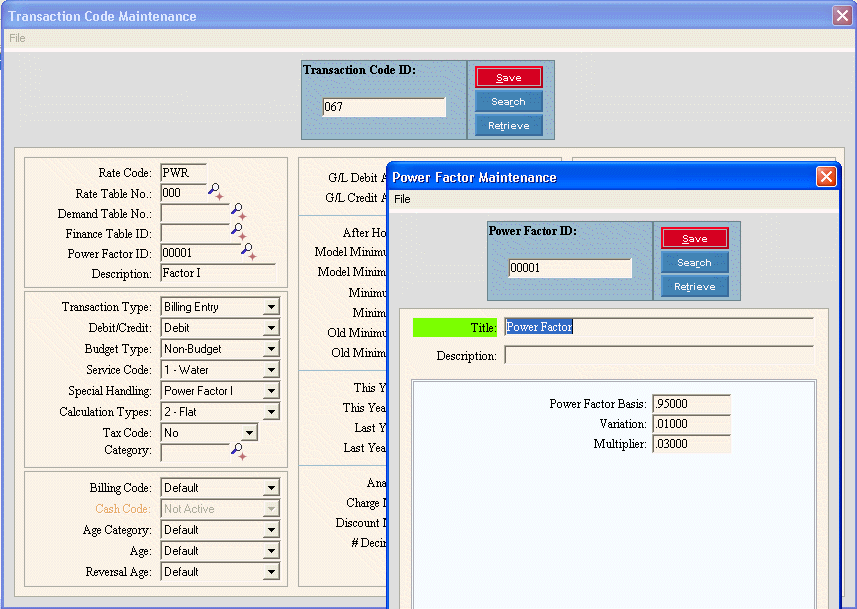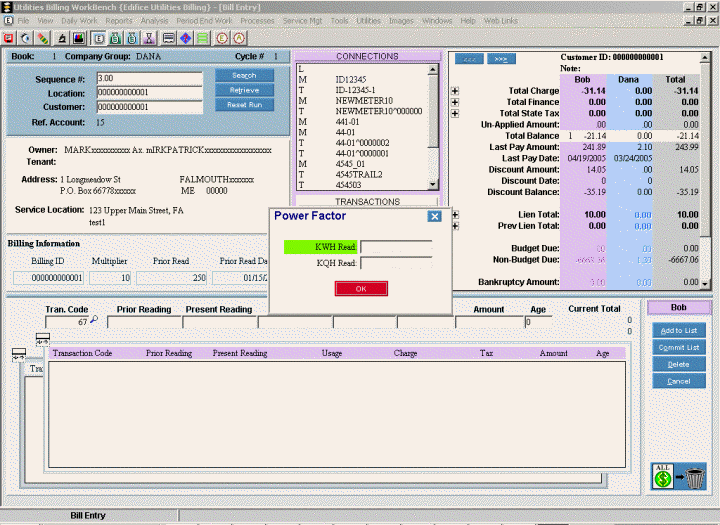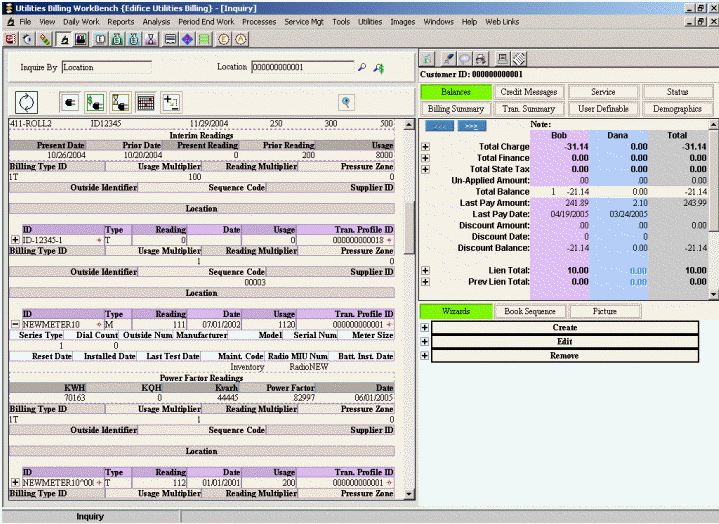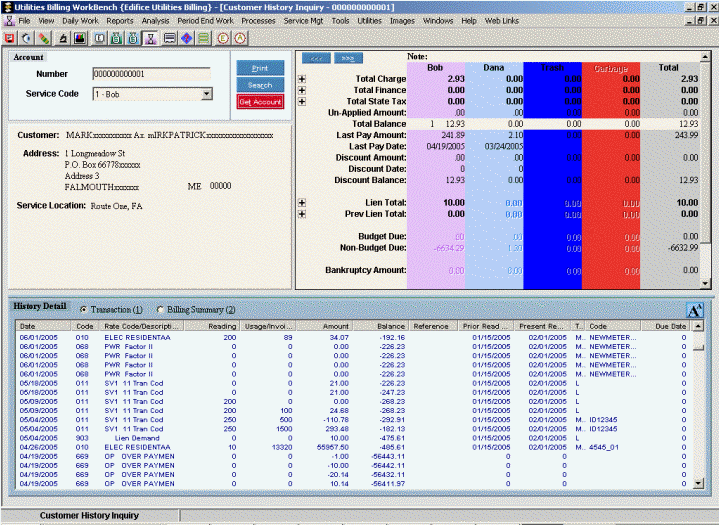
Using Power Factors
Power Factor information is used by calculations to generate billing amounts for certain types of electrical customers. EDIFICE has several power factor calculations, which are described below.
Note: Real power is the capacity of the circuit for performing work in a particular time. Reactive power is the power that flows back from a destination toward the grid in an alternating current scenario. Power factor - real power / apparent power
KWH Read is Entered Data
KQH Read is Entered Data
KWH = KWH Read – KWH Previous Read
KQH = KQH Read – KQH Previous Read
Kvarh = ((2*KQH)-KWH)/1.73
Power Factor = COS(ATAN(Kvarh/KWH))
Power Factor Multiplier = ((Break Percentage – Power Factor)/Variation)*Multiplier
KWH Read is Entered Data
Kvarh Read is Entered Data
KWH = KWH Read – KWH Previous Read
Kvarh = Kvarh Read – Kvarh Previous Read
Power Factor = COS(ATAN(Kvarh/KWH))
Power Factor Multiplier = ((Break Percentage – Power Factor)/Variation)*Multiplier
KHP = Entered Data
KQP = Entered Data
Kvarh = ((2 * kqp) - khp) / 1.73
Power Factor = COS ( ATAN ( Kvarh / double) khp))
Power Factor Multiplier = mult.add ( new BigDecimal ("1"))
khp = Entered Data
varh = Entered Data
Power Factor = COS ( ATAN ((( double) varh / (double) khp)))
Power Factor Multiplier = mult.add ( new BigDecimal ("1"))
1. Maintain Power Factor values during Power Factor Maintenance.
2. Maintain a power factor Transaction Code, by setting the following fields during Transaction Code Maintenance:
a. Assign a Power Factor ID, which contains the calculation settings for a Power Factor to the Transaction Code Power Factor field.
b. Set the Transaction Code's Special Handling to Power Factor.
c. Set the Transaction Code's Calculation Type to Flat.

3. Assign the Power Factor Transaction
Code to the appropriate Billing
Transaction Profile.
Tip: The Power Factor Transaction Code must be maintained
in the profile list before the usage-based Transaction Codes.
During Bill Entry, you are prompted to enter the KWH and KQH Reads or KWH and Kvarh Reads and a power factor is calculated. This calculation multiplier will be used in conjunction with the transaction code multiplier to increase the billed value.
Note: The Meter Import routines require values to be included in the import file, if applicable.

The power factor is displayed on the lower right side of the Bill Entry window, as shown in the example below:

Notes:
The multiplier is 1.418.
If you did not use the power factor transaction code 68, the charge would yield a result of 24.03 instead of 34.07.
All transaction codes following the power factor transaction code are multiplied by the power factor multiplier.
If the transaction code contains a multiplier the power factor multiplier is multiplied by this value prior to computation.
During the Billing Post the KWH, KQH, Kvarh, and power factor values are stored in the location billing record (where the last reading is also located) for the next calculation.
You can view the power factor history in the Service Connection panel of the Customer Inquiry.

You can view the power factor transactions during the Customer History Inquiry.
In the example below, the transaction on June 1st used the transaction code 68, which is a power factor transaction code. This transaction sets the multiplier, and all codes following the transaction code power factor use the multiplier in their calculations - including the other June 1st transaction, which uses transaction code 10.
